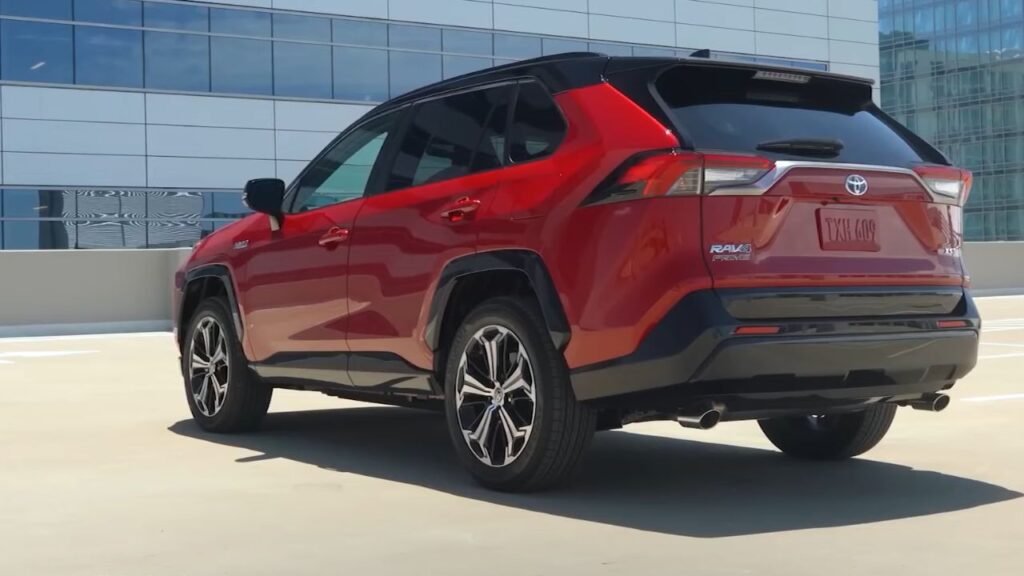The current generation of the Toyota RAV4 has been on the market for seven years, making it one of the longest-produced iterations of this popular crossover. Despite its age, the RAV4 continues to sell exceptionally well, thanks to its renowned reliability, analog simplicity, competitive pricing, and straightforward design. Recognizing the strength of these qualities, Toyota aims to retain them in the upcoming redesign, amplifying the RAV4’s virtues while addressing its drawbacks.
1. New Exterior Design




Front and Rear Redesign
The 2026 Toyota RAV4 introduces a bold new exterior, particularly at the front and rear. The front fascia features an all-new C-shaped headlight design, reminiscent of the Toyota Crown and CHR models. The traditional grille has been relocated to the bottom of the bumper, creating a sleeker, more minimalistic look.
Rear-End Enhancements
At the rear, the most striking update is the addition of a single-piece taillight that spans the entire width of the tailgate, akin to the designs on the Toyota Prius and CHR. Additionally, the license plate slot has been moved to the bumper, addressing complaints about clanking sounds on the outgoing model.
Side Profile
The side profile remains largely unchanged, retaining the iconic trapezoidal wheel arches that give the RAV4 a rugged aesthetic. This continuity is due to the new model sharing its platform with the outgoing generation, preserving its core structure while introducing modern styling updates.
2. Fully Hybrid Powertrains


Embracing Hybrids
The RAV4 is setting trends by going fully hybrid, eliminating its non-hybrid option. Sales of hybrid models have remained strong, reflecting growing consumer demand. Toyota has capitalized on this shift by discontinuing the non-hybrid version, positioning the RAV4 as a leader in the hybrid crossover segment.
Performance Upgrades
The standard RAV4 hybrid will feature a 2.5L engine with a 10-horsepower increase, delivering approximately 240 HP combined. The plug-in hybrid (formerly RAV4 Prime) will also see power boosts, achieving an output of 340–350 HP, making it a strong contender among performance-oriented SUVs. Improved fuel economy and enhanced electric powertrain capabilities round out the upgrades.
3. Enhanced Interior Quality and Technology




Premium Materials and Design
Toyota has significantly upgraded the interior, moving away from cheap plastics to a more premium feel. Higher trims feature leatherette and leather surfaces, with even the base trims benefiting from soft-touch materials. The design blends elements from the Toyota Camry and Crown, striking a balance between luxury and practicality.
Advanced Infotainment
Lower trims come with an 8-inch touchscreen and analog gauges, while higher trims boast a 12.3-inch infotainment screen paired with a fully digital gauge cluster. The new RAV4 also offers expanded interior space, particularly in the rear seats, providing more legroom and shoulder room across the board.
4. Increased Size for Greater Comfort
Dimensions and Practicality
To compete with the Toyota Corolla Cross, the new RAV4 has grown in size. At 185 inches long, it slots neatly between the current generation and the Highlander. This increase enhances ride comfort and adds significant cargo space, reinforcing the RAV4’s position as one of the most practical vehicles in its class.
Ride Quality Improvements
The extended wheelbase not only boosts interior space but also allows the vehicle to handle road imperfections more gracefully, offering a smoother ride.
5. Competitive Pricing
Value Across Trims
Despite the enhancements, the 2026 RAV4 remains an excellent value proposition.
- LE Base Model: Starting at $30,000, it includes an 8-inch screen, cloth upholstery, and Toyota Safety Sense 3.0.
- XLE: Starting at $32,000, this trim adds aesthetic upgrades and modest interior improvements.
- XLE Premium: Priced at $35,000, it offers leatherette seating, a larger touchscreen, and a more refined design.
- Limited: At $40,000, it features premium materials like open-pore wood trim and quilted leather seats.
PHEV Pricing
Plug-in hybrid versions will cost approximately $3,000 more per trim, representing excellent value for those seeking enhanced performance and fuel efficiency.


